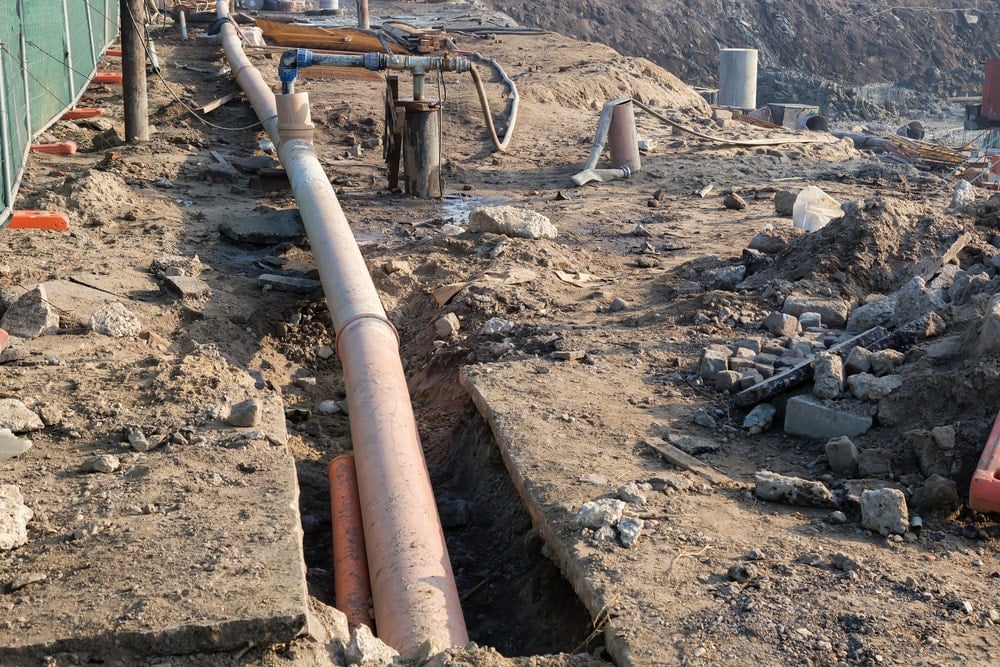✉️ [email protected] | 📞 +971-4-2675252
Home / Applications / Dewatering
Dewatering
Al Khamis Equipment LLC, provides water pump solutions for Dewatering. Contact us to know more

Dewatering
What is Dewatering?
Dewatering is the process of removing water from a solid material or a saturated area. It involves the removal or extraction of excess water to reduce the water content and achieve a drier state. Dewatering is commonly performed in construction, mining, and environmental remediation projects where water accumulation poses a challenge.
In construction, dewatering is often required to create a dry and stable working environment. It is employed to lower the water table or remove groundwater from excavations, foundations, trenches, or construction sites to prevent water seepage, maintain stability, and facilitate construction activities.
In mining operations, dewatering is crucial for managing water that enters underground mines or accumulates in open pits. Excessive water can hinder mining operations, cause safety hazards, and affect the stability of mine structures. Dewatering methods such as pumping, drainage systems, or underground ditches are used to remove water and maintain dry conditions for mining activities.
In environmental remediation, dewatering is employed to address contaminated sites or areas affected by flooding or waterlogging. It helps in reducing the water content of contaminated soil or sediments, enabling easier handling, treatment, or disposal. Dewatering can also be used to control water levels in wetlands, ponds, or reservoirs to restore ecological balance or manage water resources effectively.
Various techniques are utilized for dewatering depending on the specific requirements and site conditions. Common methods include:
- Wellpoints: Wellpoints are small-diameter pipes inserted into the ground, connected to a vacuum or centrifugal pump. They create a localized drawdown around the wellpoints, allowing water to be extracted from the surrounding soil.
- Deep Wells: Deep wells involve drilling boreholes and installing submersible pumps to lower the groundwater level in deeper formations.
- Sump Pumps: Sump pumps are used to collect and remove water from basements, pits, or low-lying areas by pumping it to a desired location or a drainage system.
Vacuum-Assisted - Dewatering: Vacuum-assisted dewatering utilizes a vacuum pump or vacuum systems to extract water from soil or sediment. This method is particularly effective for fine-grained materials.
- Geotextile Dewatering Bags: Geotextile bags or tubes are filled with sediment or sludge and placed in a designated area. Water gradually drains through the geotextile fabric, leaving the solids dewatered.
- Mechanical Dewatering: Mechanical dewatering methods include the use of filter presses, centrifuges, or belt presses, which apply pressure or mechanical forces to separate water from solids.
Dewatering is an essential process in many industries and applications to manage water levels, improve site conditions, and facilitate construction, mining, or environmental remediation activities.
Centrifugal Pumps
Centrifugal Pumps
Centrifugal pumps offer several benefits that make them widely used in various applications. Here are some of the advantages of using centrifugal pumps:
- High Efficiency: Centrifugal pumps are known for their high efficiency in converting input power into fluid flow. Their impeller design and fluid dynamics help achieve efficient transfer of energy, resulting in effective pumping with minimal energy wastage.
- Wide Range of Flow and Pressure: Centrifugal pumps are available in a wide range of sizes and configurations, allowing for flexibility in handling different flow rates and pressures. They can handle both low-flow and high-flow applications, making them versatile for various pumping requirements.
- Simple and Compact Design: Centrifugal pumps have a relatively simple design, consisting of a few main components such as an impeller, casing, and shaft. This simplicity makes them easy to operate, maintain, and repair. Their compact size also makes them suitable for installations where space is limited.
- Smooth and Continuous Flow: Centrifugal pumps provide a steady and continuous flow of fluid, which is crucial for many applications. They generate a consistent flow rate, ensuring reliable and uninterrupted operation.
- Handling of Different Fluid Types: Centrifugal pumps can handle a wide range of fluids, including clean water, liquids with small solids, and viscous fluids. They are commonly used for water supply, irrigation, HVAC systems, wastewater management, and various industrial processes.
- Ability to Handle Large Volumes: Centrifugal pumps are capable of handling large volumes of fluid, making them suitable for applications that require high flow rates. They can efficiently move large quantities of water or other fluids, making them useful in dewatering, flood control, and water transfer projects.
- Cost-Effective: Centrifugal pumps are often cost-effective in terms of initial investment, maintenance, and operation. They are widely manufactured, readily available, and competitively priced. Additionally, their efficiency helps reduce energy consumption and operating costs over time.
- Reliability and Durability: Centrifugal pumps are designed to be reliable and durable. They are constructed with robust materials and components to withstand continuous operation, even in demanding conditions. With proper maintenance and care, centrifugal pumps can have a long service life.
It’s important to consider the specific requirements of the application and consult with us to ensure the selection of the right centrifugal pump for optimal performance and efficiency.
